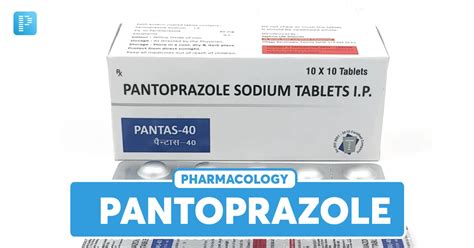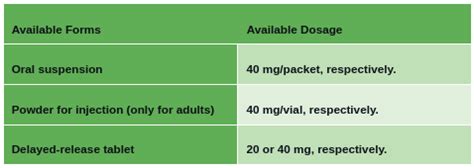Intro
Pantoprazole uses and benefits include treating acid reflux, GERD, and stomach ulcers, leveraging its proton pump inhibitor properties to reduce heartburn and promote digestive health.
Pantoprazole is a widely prescribed medication that has been instrumental in treating various gastrointestinal disorders. Its effectiveness in reducing stomach acid production has made it a staple in the treatment of conditions such as gastroesophageal reflux disease (GERD), Zollinger-Ellison syndrome, and peptic ulcer disease. The importance of pantoprazole lies in its ability to provide relief from symptoms such as heartburn, chest pain, and difficulty swallowing, which can significantly impact an individual's quality of life. As a proton pump inhibitor (PPI), pantoprazole works by decreasing the amount of acid produced in the stomach, thereby reducing inflammation and allowing the esophagus to heal.
The benefits of pantoprazole are numerous, and its uses extend beyond the treatment of common gastrointestinal disorders. For instance, pantoprazole is often prescribed to prevent gastrointestinal bleeding in patients who are at risk of developing this condition. Additionally, it is used to treat conditions such as dyspepsia, which is characterized by persistent pain or discomfort in the upper abdomen. The medication's ability to reduce stomach acid production also makes it an effective treatment for erosive esophagitis, a condition in which the esophagus becomes inflamed due to acid reflux. With its proven track record of providing relief from gastrointestinal symptoms, pantoprazole has become a trusted medication among healthcare professionals and patients alike.
Pantoprazole's mechanism of action is complex, involving the inhibition of the H+/K+ ATPase enzyme system at the secretory surface of gastric parietal cells. This inhibition results in a decrease in gastric acid secretion, which in turn reduces the symptoms associated with excessive acid production. The medication's pharmacokinetic profile is characterized by rapid absorption, high bioavailability, and a relatively long half-life, allowing for once-daily dosing in most cases. Furthermore, pantoprazole has been shown to be well-tolerated, with common side effects such as headache, diarrhea, and nausea being generally mild and transient. As research continues to uncover the full potential of pantoprazole, its role in the treatment of gastrointestinal disorders is likely to expand, providing relief to millions of people worldwide.
Pantoprazole Mechanism Of Action

The benefits of pantoprazole's mechanism of action are numerous. For instance, the medication's ability to reduce gastric acid production results in a decrease in symptoms such as heartburn, chest pain, and difficulty swallowing. Additionally, pantoprazole's mechanism of action allows it to be used in combination with other medications, such as antibiotics, to treat conditions such as Helicobacter pylori infection. The medication's pharmacokinetic profile is also characterized by rapid absorption, high bioavailability, and a relatively long half-life, allowing for once-daily dosing in most cases. Furthermore, pantoprazole has been shown to be well-tolerated, with common side effects such as headache, diarrhea, and nausea being generally mild and transient.
Pantoprazole Uses

The benefits of pantoprazole's uses are numerous. For instance, the medication's ability to reduce gastric acid production results in a decrease in symptoms such as heartburn, chest pain, and difficulty swallowing. Additionally, pantoprazole's uses extend beyond the treatment of common gastrointestinal disorders, and it is often prescribed to prevent gastrointestinal bleeding in patients who are at risk of developing this condition. The medication's pharmacokinetic profile is also characterized by rapid absorption, high bioavailability, and a relatively long half-life, allowing for once-daily dosing in most cases. Furthermore, pantoprazole has been shown to be well-tolerated, with common side effects such as headache, diarrhea, and nausea being generally mild and transient.
Pantoprazole For GERD
Pantoprazole is commonly used to treat GERD, a condition in which stomach acid flows back into the esophagus, causing symptoms such as heartburn, chest pain, and difficulty swallowing. The medication's ability to reduce gastric acid production makes it an effective treatment for GERD, and it is often prescribed to patients who have not responded to other treatments. Additionally, pantoprazole is used to prevent complications of GERD, such as esophagitis and stricture formation.Pantoprazole For Peptic Ulcer Disease
Pantoprazole is also used to treat peptic ulcer disease, a condition in which sores develop in the lining of the stomach or duodenum. The medication's ability to reduce gastric acid production makes it an effective treatment for peptic ulcer disease, and it is often prescribed to patients who have not responded to other treatments. Additionally, pantoprazole is used to prevent complications of peptic ulcer disease, such as bleeding and perforation.Pantoprazole Benefits

The benefits of pantoprazole can be summarized as follows:
- Reduced symptoms of gastrointestinal disorders, such as heartburn, chest pain, and difficulty swallowing
- Prevention of complications of gastrointestinal disorders, such as bleeding and perforation
- Rapid absorption, high bioavailability, and a relatively long half-life, allowing for once-daily dosing in most cases
- Well-tolerated, with common side effects such as headache, diarrhea, and nausea being generally mild and transient
- Ability to be used in combination with other medications, such as antibiotics, to treat conditions such as Helicobacter pylori infection
Pantoprazole Side Effects

These side effects are usually mild and transient, and they often resolve on their own without the need for medical attention. However, in some cases, pantoprazole can cause more serious side effects, such as:
- Allergic reactions, such as hives, itching, and difficulty breathing
- Increased risk of osteoporosis-related fractures
- Increased risk of Clostridioides difficile-associated diarrhea
- Increased risk of vitamin B12 deficiency
It is essential to discuss the potential side effects of pantoprazole with your healthcare provider before starting treatment. Your healthcare provider can help you weigh the benefits and risks of pantoprazole and determine if it is the right medication for you.
Pantoprazole Interactions

It is essential to discuss the potential interactions of pantoprazole with your healthcare provider before starting treatment. Your healthcare provider can help you determine if pantoprazole is safe to take with your other medications and can monitor you for any potential interactions.
Pantoprazole Dosage

It is essential to follow the dosage instructions provided by your healthcare provider and to take pantoprazole exactly as directed. Taking more or less of the medication than prescribed can increase the risk of side effects and reduce the effectiveness of the medication.
Pantoprazole Warnings And Precautions

It is essential to discuss the potential warnings and precautions of pantoprazole with your healthcare provider before starting treatment. Your healthcare provider can help you weigh the benefits and risks of pantoprazole and determine if it is the right medication for you.
What is pantoprazole used for?
+Pantoprazole is used to treat a variety of gastrointestinal disorders, including GERD, Zollinger-Ellison syndrome, and peptic ulcer disease.
How does pantoprazole work?
+Pantoprazole works by inhibiting the H+/K+ ATPase enzyme system at the secretory surface of gastric parietal cells, resulting in a decrease in gastric acid production.
What are the common side effects of pantoprazole?
+The most common side effects of pantoprazole include headache, diarrhea, nausea, abdominal pain, dizziness, and fatigue.
Can pantoprazole be taken with other medications?
+Pantoprazole can interact with other medications, including warfarin, clopidogrel, ketoconazole, and atazanavir. It is essential to discuss the potential interactions of pantoprazole with your healthcare provider before starting treatment.
What is the typical dosage of pantoprazole?
+The typical dosage of pantoprazole is 40 mg once daily for the treatment of GERD and peptic ulcer disease, and 40 mg twice daily for the treatment of Zollinger-Ellison syndrome.
In summary, pantoprazole is a widely prescribed medication that has been instrumental in treating various gastrointestinal disorders. Its effectiveness in reducing stomach acid production has made it a staple in the treatment of conditions such as GERD, Zollinger-Ellison syndrome, and peptic ulcer disease. The benefits of pantoprazole are numerous, and its uses extend beyond the treatment of common gastrointestinal disorders. As research continues to uncover the full potential of pantoprazole, its role in the treatment of gastrointestinal disorders is likely to expand, providing relief to millions of people worldwide. If you have any questions or concerns about pantoprazole, please do not hesitate to comment below or share this article with others who may be interested in learning more about this medication.
